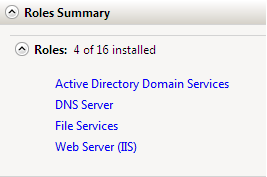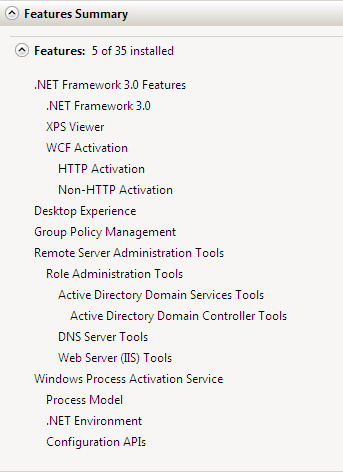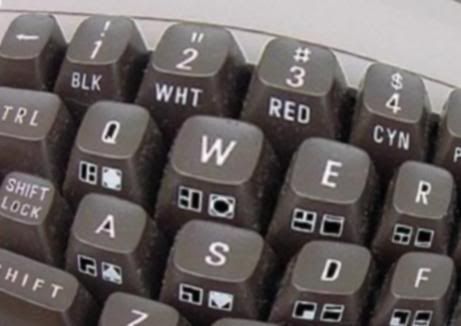Now I must confess that I am no expert when it comes to wiring and I don't do this for a day job! I'm sure there are probably a few others out there who can probably give me a few tips or advice and correct me on some things! :-)
So why install a structured cabling system? My answer? Why would you not install a structuctured cabling system! Telecom have recommended now for several years that all new houses be wired with a minimum of cat5e cable in a star configuration back to central point to replace the conventional method of running phone cabling in series between jackpoints. There are still a surprising number of "experts" in the trade who are still stuck in the dark ages and continue to stick to this but the reality is no new home should be wired like this any longer.
With multiple phones, multiple internet connected PC's and cable or satellite TV now the norm in many homes a structured cabling system is a logical approach and also doesn't need to cost the earth - for an average new house the cost of an entire fitout consisting of cable (cat 5e and RG6), patch panel, and all sockets shouldn't cost you more than $500. Right now wireless is still nowhere near as fast as Ethernet for computer networking and cat5e cable can also carry a myriad of signals ranging from phone, ethernet right through to component video and HDMI with appropiate baluns. With the VoIP era also about to approach you've got to be crazy to not be prepared while you have the opportunity!
This is a 3 bedroom house with open plan kitchen and lounge with a semi detached dining room which could easily be used as a study or kids play area or converted into a bedroom. My plan has been to use 12 cat5e jackpoints around the house and F connectors for RG6 for TV in all rooms. This is all run back to a 16 way patch panel in a hallway cupboard. The lounge has 3 RG6 sockets allowing for a terrestrial aerial, satellite dish and a return feed so the output from your STB can be viewed on any other TV in the house.
Master bedroom: TV + dual RJ45 + single RJ45 next to bed for a phone
Bedroom 1: TV + dual RJ45
Bedroom 2: TV + dual RJ45
Dining/Study: TV + dual RJ45
Kitchen: Single RJ45 for phone
Lounge: TV + dual RJ45
The choice of a 16 way patch panel allows 12 sockets wired back to jackpoints with the last 4 jumpered back to the incoming phoneline so they can be patched as required. The incoming phoneline is terminated in a standard jackpoint on the wall (which also serves as a test point as required by Telepermit regs) and this is then connected to port 16 on the patch panel and jumpered across to 15,14 and 13.
This house will have TelstraClear cable service provided to it so there is no provision for a central ADSL line splitter however this could obviously easily be retrofitted if needed. If you're like most of the country and rely on ADSL for your broadband this is something you will want to factor in as it's so much simpler and tidier than requiring filters on every jackpoint that will have a phone on it.
This layout is probably about the bare minimum you would want to install in a house, it's certainly much cheaper to run extra cable when a house is being built than later on wish that you had done it so!
Choose a logical place to wire all your cable back to. A garage makes a great place but a hallway cupboard is really your only choice if you don't have an internal access garage. Remember to also install a power point nearby as you'll need this for your modem/switch and things such as a VoIP ATA. A wall mounted rack cabinet makes things look nice and tidy if you have space and remember that you may want to have your network running off a small UPS since they are so cheap these days so factor options such as this in when you're working out the dimensions.
So on with the pictures. First up is a quick view of the inside of the house with most of the electrical wiring now done.

Use 25mm drill bits for all wiring holes. Be wary of any structural walls if you're drilling multiple holes in the same beams - ask a builder for advice if you're unsure. Also remember that flush boxes need to be flush - if they stick out you'll have trouble attaching the jib to the wall. Also try and avoid running cable near power, if at all possible try and stay a minimum of 200mm away with the main cable runs. Running plugs on the opposite side of a stud is an easy way to keep cables seperate at the jackpoints. If you do need to cross power cables (and there are times where this can't easily be avoided) ensure the cables cross at right angles and do not run parallel to each other.

Use electrical tape to bundle cat5e cable together. While solid cable is fairly robust it is not invincible. Do not staple this cable or run it at extreme angles. Cable ties stapled to beams are a good way of attaching cable but again do not tighten these up fully as it could easily damage the cable.

Cable all running back to the hallway cupboard. RG6 coax and alarm cable is still to be run back to this same wall.

Well that's about it for part 1 - I'll update this as the work proceeds.
So, its been one full day with Windows Server 2008 now and have configured,
1) Active Directory Services
a) Created a new Domain Forest2) Configured .NET Environment
b) Added Domain Users
c) Joined Vista machines to the Domain (right now 1, but more to come)
a) Installed IIS 7 (IIS 7 looks really nice than in Vista!)
b) Installed the .NET Environment (both .NET 3.0 and 3.5)
[ .NET 3.5 - you have to download and install ]
c) Installed WCF
d) Hosted my WCF Service in IIS
Still to install,
a) SQL Server 2005Here are the Roles installed,
b) WSUS for Windows Server 2008
[I am not able to get WSUS for Windows Server 2008 RTM, If anybody have any clue about that, please do leave your comment)

And Features installed,

Things are so easy with Windows Server 2008

More posts to come.....
Yahoo has been having a few problems the last few weeks have to lay of 1000+ people.
Now Microsoft is saying, here is $44.6billion us for Yahoo. Will it happen? Quite a few people have been predicting that Microsoft was going to buy them back in 2006.
They are a good match, I wish them well and hope they can both learn from each other. Like everyone.
Could this mean a change back for Xtra from Yahoo back to Microsoft. I don't think so mate.
I have had a thing with Yahoo, ever since they broke flickr. I use to be able to generate Slideshows based or a group of TAGS ie user+tag1+tag2 It was great for working with alot of data, But they changed it to just one tag. meh useless
http://news.google.co.nz/news?q=microsoft+buying+yahoo
TechCrunch had a great repot on the numbers.
Oh I was impressed with a few threads on Geekzone this week, ok sometimes my mental illness become very noticeable and have have to sit back and remove my feet from my gob. But the read profecional jurno's entering into a debate was a thrill and then to cap it off for being there, in the public, Malcolm Dick, Co-founder of CallPlus talking. Wow, I think I had a bit of a reality shift on that one. For Mal to come into a public like was strangely cool. Great PR for the opening to the Slingshot/CallPlus Geekzone forum. Nice One Stu
The iFrame technique used on the site has been seen in thousands of similar hacks over the past few months Read More
 I recall that when I got my first computer, a C=64 and the 1st time I saw the message,
I recall that when I got my first computer, a C=64 and the 1st time I saw the message,"PRESS ANY KEY TO CONTINUE"
If you don't know the C=64 Keyboard, it has three layers of keys. So each key had the standard character + two symbols. It took a few seconds before I realised that my computer didn't have a "ANY" key hidden and it was meaning any key at all.
This made me think, as I had my morning coffee, how cool it would be to have keys like that, based around a programming language. Keys like AND NOT, well the basic logic instructions, would it have made programming easer. Then I had some cake, looked a buda and thought up a fake interview...
Reporter to Nintendo, "Some say the DS is stealing peoples Souls."
Nintendo replies "Don't worry you will get it on a higher level"
Moving to open networks with end-point security is not so simple Read More
No comments:
Post a Comment